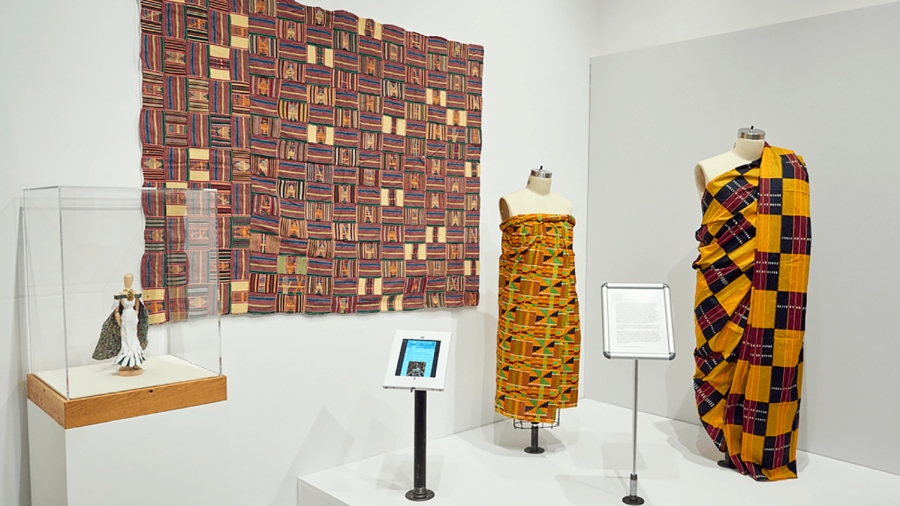Longyear Museum of Anthropology Discusses Importance of Fair Representation
Longyear Museum curator Rebecca Mendelsohn conversed with students about the Museum’s newest exhibitions, the challenges of museum curation and the importance of a collaborative work environment on Friday, Sept. 12 at 2:00 p.m.
Housed in Alumni Hall, the Longyear Museum of Anthropology is a well-known source of history and culture on Colgate’s campus. With new and vibrant exhibits every semester, students have the opportunity to engage with different materials and learn about a vast array of people and cultures.
Mendelsohn specializes in archaeology of Mesoamerica, a cultural region spanning most of Mexico, Guatemala, Belize, Honduras and El Salvador. She is especially excited for the upcoming “Makers and Materials of the Americas” exhibit, which the Longyear Museum will be showcasing next semester. Focusing on objects and their makers, this exhibit aims to create a more detailed picture of the people and cultures of that time. Through careful research of the materials themselves, the Longyear Museum curators want to uncover not only the cultural significance of these items but also the personal meanings behind their creation.
“All too often, the only thing we know about objects in anthropology collections is the ‘culture’ it was affiliated with, and sometimes a ballpark time frame in which it was created. But these things were made by individuals, some as art objects and others as personal belongings. The exhibition is an experiment in seeing what we can learn about the people who produced the pieces in the Longyear collections and learn what these objects may have meant to them,” Mendesohn explained.
Through this process of research and examination, Mendelsohn and her colleagues aim to tell a comprehensive story of complex cultures and peoples. This new approach to museum curation speaks to Mendelsohn’s innovative ideas on how to engage students with material in an honest way.
With over 30,000 items in the Longyear Museum’s collection, Mendelsohn and her team are excited for the many opportunities that can come with museum studies and curation. However, with these possibilities comes a huge shared responsibility.
“One of the hot topics in the museum field right now is about decolonizing museums. This is a huge subject with implications for everything, from collections storage and access to who gets hired to work in museum spaces. When it comes to exhibitions, an important question we are asking ourselves these days is: ‘who gets to tell the stories?’ For a long time, curators have been labeled as ‘experts’ because of our advanced training. I think we’re in a place now where it is clear that curators should not be the only ones who get to speak for the collections and the ideas represented therein,” Mendelsohn said.
Recognizing the importance of this responsibility, Colgate works closely with the surrounding native populations, living artists and other college museums to promote accurate representations in its museum spaces across campus.
“It is our responsibility to create spaces for others to share their perspectives and experiences as well. In practice, this is not always easy, but I think it is incredibly important to do,” Mendolsohn said.
From media and text on the walls to interactive technology, the Longyear Museum’s team of curators looks forward to students coming into the space and exploring another culture or place. Although museums in the past have excluded many cultures, Mendelsohn is proud to say that Colgate’s Longyear Museum of Anthropology actively practices inclusion and fair representation so the space can be an inviting place to learn and grow.
“I think our team tries to foster an appreciation for the fact that people can all be different from one another, but that that is actually something to be excited about. If we take the chance to listen, we have so much we can learn from one another,” Mendeolsohn said.
Mendeloshn and her colleagues will continue to discuss museum studies and curation with students during their monthly “Coffee With a Curator” meetings over zoom. Students can also get involved with the Longyear Museum through its summer curatorial internships. Currently, the Longyear Museum of Anthropology is open to students and faculty by appointment, who can contact [email protected] for more information.









